Florence Territorial Unit
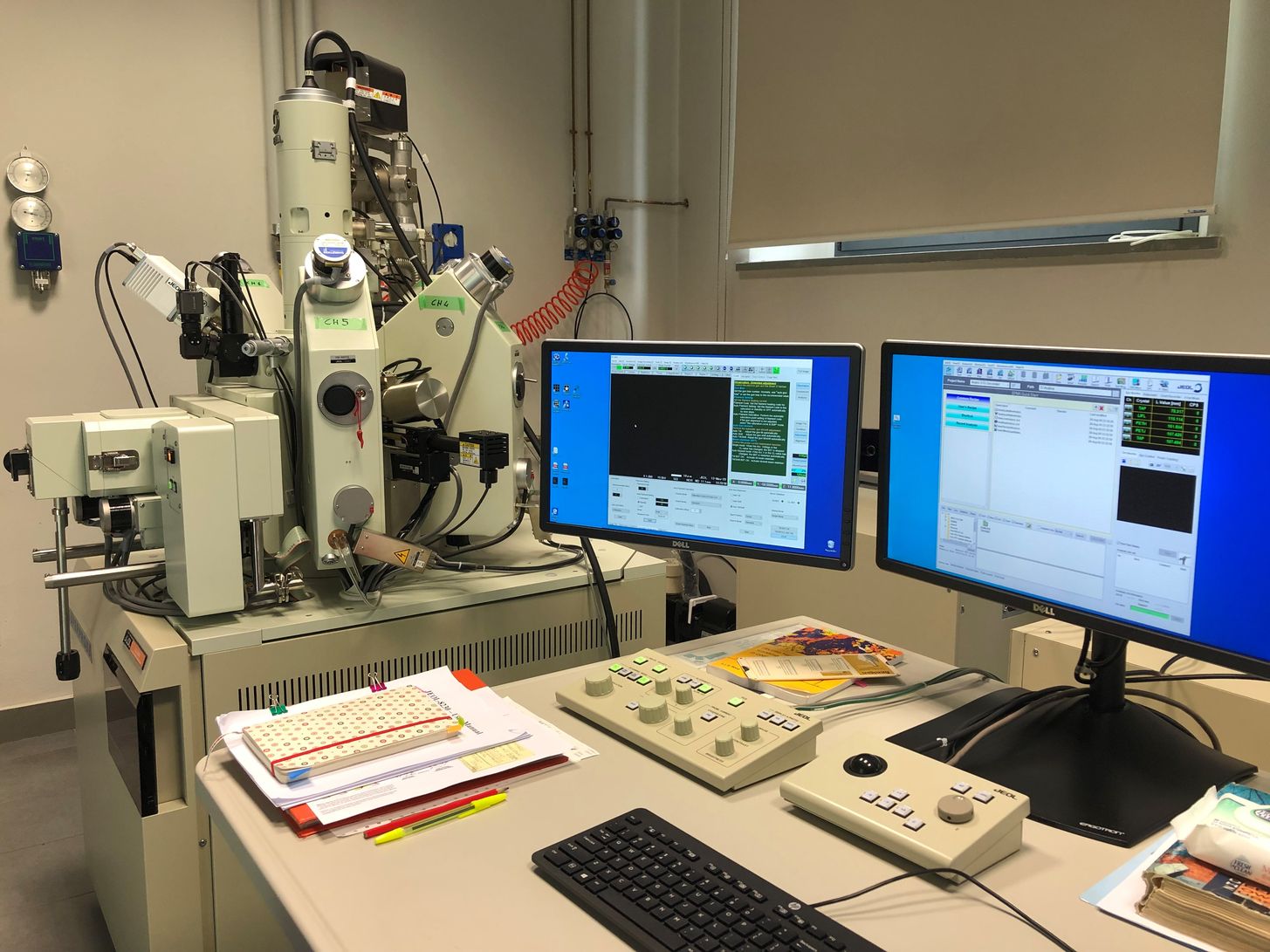
INSTRUMENTS
The electronic microprobe is the main tool for obtaining in situ chemical composition of any solid object with a high spatial resolution (in the order of microns). The instrument is particularly suitable for the quantitative analysis of the elements (Z> 3) in minerals, glasses, metal alloys and other solid matrices after calibration with suitable standards.
- JEOL JXA-8230 Electronic Microprobe. The instrument, installed in 2020 at the "Filippo Olmi" laboratory of the Department of Earth Sciences in Florence, is equipped with 5 wavelength dispersion spectrometers (WDS), each equipped with different analyzer crystals, some of which are dedicated to the analysis of light elements (1: TAPJ, LDE1, PETJ, LDEB; 2: LIFL, PETL; 3: LIFH, PETH; 4: LIF, PETJ; 5: TAPJ, LDE2) and gas flow and sealed detectors. A solid state (SDD) energy dispersion detector (EDS) allows to instantly acquire the emission spectrum and quickly identify the elements in the sample. The electron source can be constituted by a W filament (ideal for compositional analyzes) or by a LaB6 crystal, which allows to obtain a particularly thin beam shape, thus increasing the spatial resolution (mainly used for applications of mapping). In its standard configuration, the instrument works with a W filament. An additional ion pump allows for excellent vacuum conditions that guarantee greater stability of the incident electronic. The analytical potential of this new tool therefore allows to:
- analyze light elements starting from Be, thanks to the presence of specific and dedicated analyzer crystals (LDE1; LDEB; LDE2);
- reduce analytical times, thanks to the presence of 5 WDS spectrometers;
- have a greater sensitivity that allows to detect trace elements in the order of hundreds of ppm, thanks to the presence of spectrometers with specific geometries;
- perform WDS compositional maps with high spatial resolution thanks to the LaB6 source;
- use an EDS system with a high performance detector that allows to obtain a complete compositional spectrum in a short time, potentially resolved even at low energies (e.g. elements such as O, F, B), and maps indicative of the elemental distribution in the different samples; The sample can be viewed through a digital SEM screen, both in backscattered electrons (BSE), obtaining a compositional image with gray tones, proportional to the electron density of the sample, and in secondary electrons (SE), obtaining a morphological image of the sample surface. A camera connected to another monitor allow to focus the sample and observe it in reflected or transmitted light, thanks to an additional lens (OMT), that can be inserted in the chamber below the sample holder (only for samples mounted on petrographic thin sections). The integrated software allows to program specific analytical routines for the different phases to be investigated, customizing them to different needs (e.g. order of the elements, counting times, current intensity); it also allows to program serial sequences that can be executed automatically, by storing multiple points of analysis. Then, the operator can make optimal use of the machine time.
- Leica EM ACE 200 vacuum coater
- JEOL JEE-4X graphite coater
Fields of application:
The analytical activity of the laboratory is mainly focused on:
- applications to Earth Sciences, with analyses of mineral matrices (silicates, oxides, sulphides and carbonates) and glass present in terrestrial and extraterrestrial rocks, with the aim of obtaining information on the geological processes that generated them.
- applications in the field of cultural heritage and archaeometry, with analysis on ancient glass, metal alloys and ceramics.
- applications in the field of crystallochemistry, as well as new technological materials.
For these purposes, the laboratory has some sets of specific standards for the various analytical applications:
- Astimex MIN standards used for the calibration of elements in silicates and oxides and secondarily in sulphides, phosphates and carbonates;
- Astimex MET standards used for the calibration of the elements in metal alloys;
- P&H standard for the calibration of the elements in sulphides;
- P&H standard for the calibration of rare earths;
- International standards (Smithisonian, BioRad) to test the quality of the calibration and the reproducibility of the analyses over time.
METHODS
The electron microprobe analysis is a technique for chemically analysing small selected area of solid samples (for elements with atomic number higher than 8) in which X-rays are produced (excited) by a focussed electron beam incident on a solid specimen. The emitted X-ray spectrum is made by lines characteristic of the elements present into the sample, hence a quantitative analysis can be obtained by identifying the lines from their wavelength once the emission is collected by WDS spectrometers and analysed by specific analysing crystals following the Bragg law.
The analysing crystals place in turn at a prefixed distance from the sample in order to analyse a specific wavelength.
By comparing the intensities (count per second on the element peak position) with those emitted from standard samples (pure elements of compounds of know composition) it is possible to quantitatively determine the elements concentration. For silicates, major elements are counted 15 seconds on the peak (except than Na, 10 seconds, to prevent volatilisation) whereas minor elements are counted for 40 seconds. Peak counting, calibration standards and wavelength lines can be varied and properly chosen depending on sample matrix and elemental contents.
To optimize the X-ray emission and their decoding for quantitative analysis the sample should be properly prepared. The sample surface must be flat, well polished and accurately coated. Each sample is fixed on a sample holder and a carbon suspension is applied to increase the conductivity and prevent electron charges accumulation on the surface.
APPLICATIONS
EMPA is a quantitative, non-destructive analytical method that can be applied to every field of interest, whenever the investigation of the elemental composition of solid crystalline/non crystalline sample material is needed (from rocks to ore and metals, from ancient ceramic potteries to commercial glasses). The EMPA can be usefully employed on natural and earth sciences studies, on archaeological and cultural heritage researches, as well as on environmental and forensic investigations.
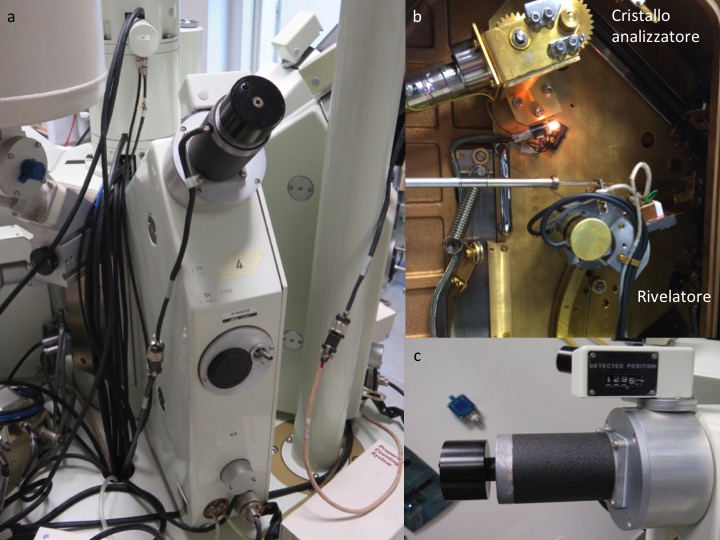
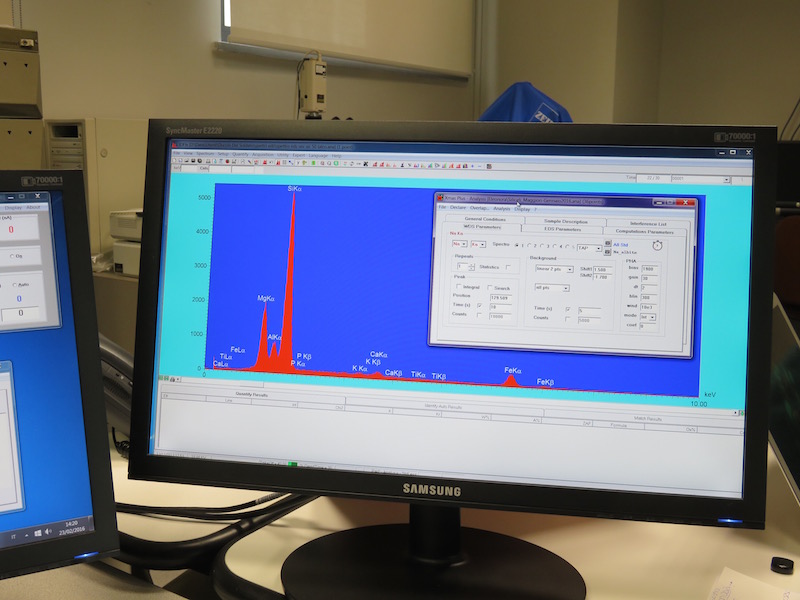
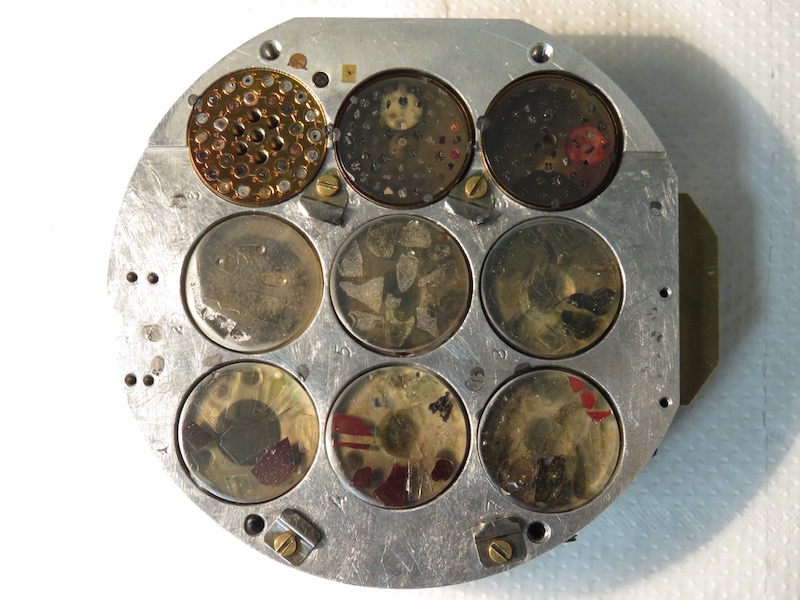
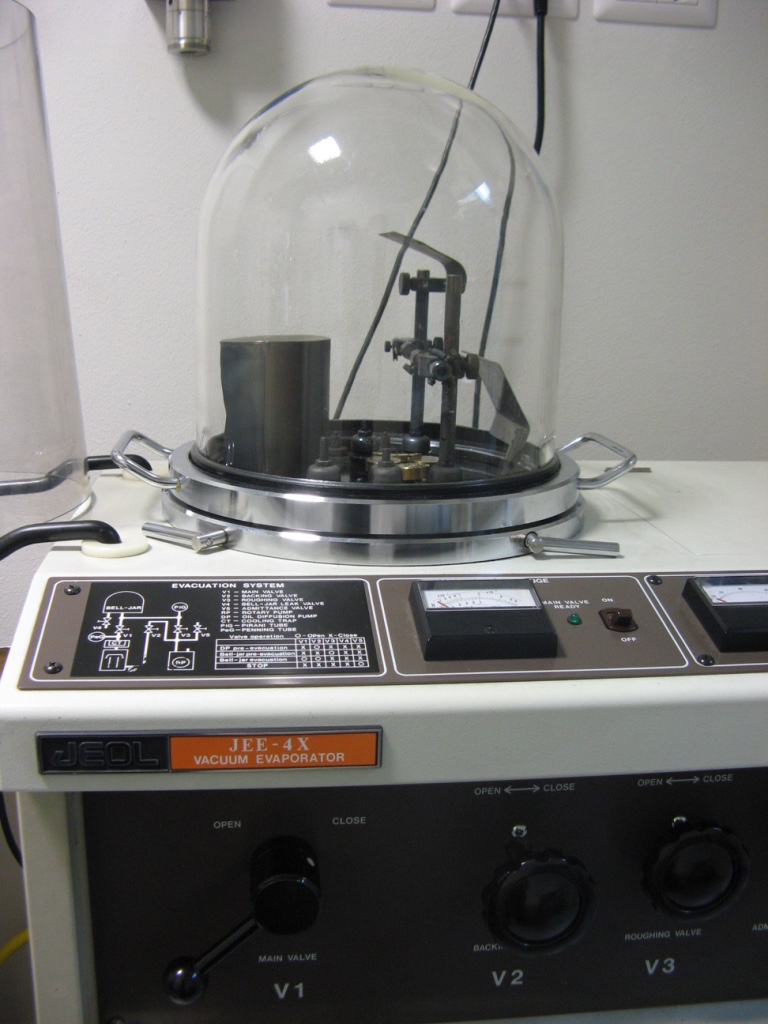
From the ’80, when the JEOL JXA-8600 electron microprobe device has been installed, the laboratory has been regularly involved and financed by the principal national projects (i.e. GNV-INGV agreement, PRIN). At the present the lab is not involved in any specific project, but many researchers use the EMPA lab facility as a fundamental tool for the basic investigation in the frame of several national and international projects.
Moreover, during the last three years the european project IMAGE has supported part of the lab activity and instrumental needs.
Due to the interdisciplinary vocation and usefulness of the EMPA, the laboratory is involved in a wide range of scientific fields. The principal activity focuses on silicate analyses for magmatological/petrological studies, oxides, metal alloys and sulphurs applied to archaeometallurgy and ore deposit studies. Anyway, more other fields of applications are welcome from paleontological, archaeological, and environmental to forensic studies, as well as new materials investigations.
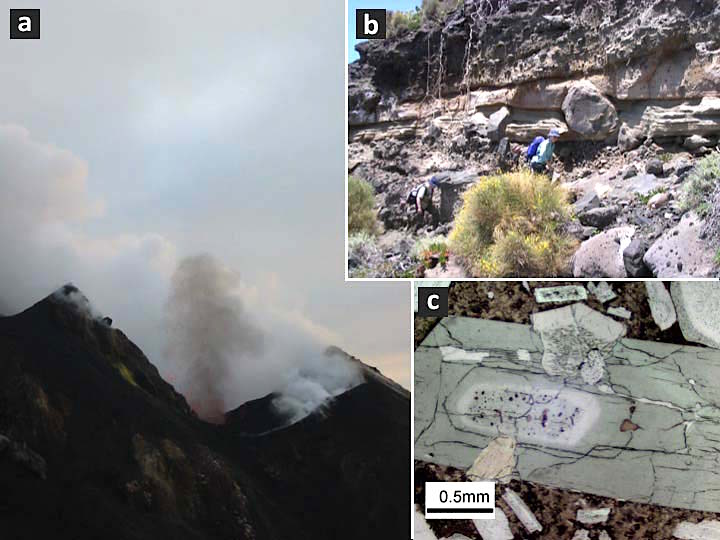
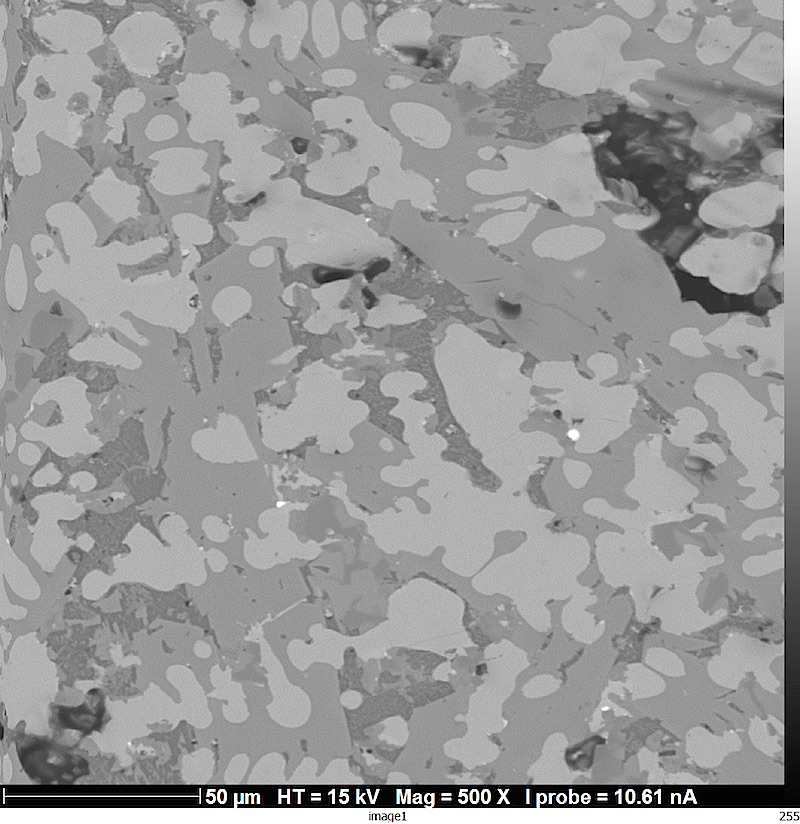
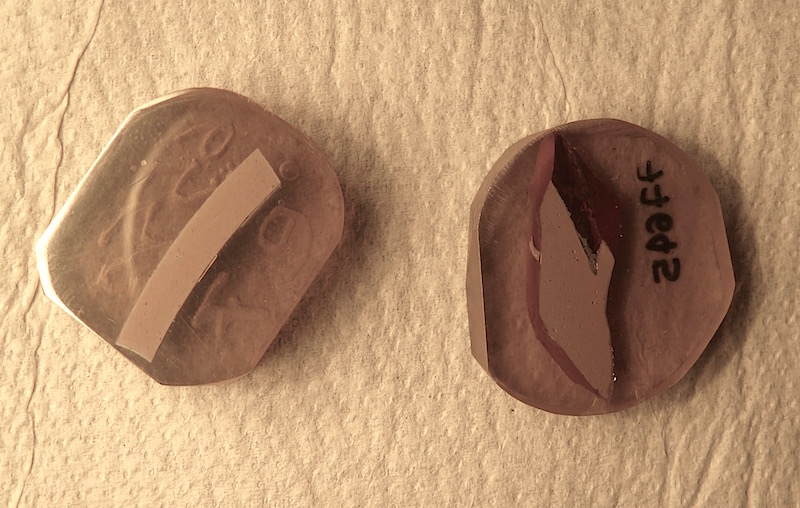
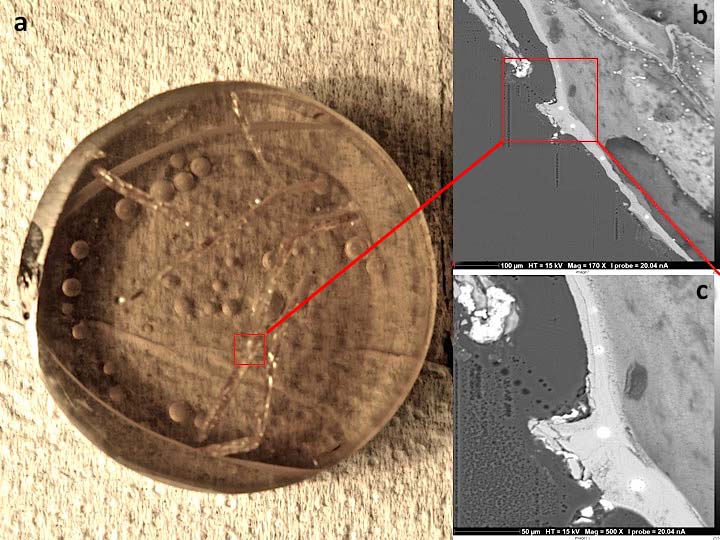
- Conticelli S., Boari E., Burlamacchi L., Cifelli F., Moscardi F., Laurenzi M.A., Ferrari L., Francalanci L., Benvenuti M.G. Braschi E., Manetti P. (2015) - Geochemistry and Sr-Nd-Pb isotopes of Monte Amiata Volcano, Central Italy: evidence for magma mixing between high-K calc-alkaline
and leucititic mantle-derived magmas. Ital. J. Geosci. 134. DOI: 10.3301/IJG.2015.12 - Gliozzo E., Lepri B., Saguì L., Turbanti Memmi I. (2015) - Colourless glass from the Palatine and Esquiline hills in Rome (Italy). New data on antimony- and manganese decoloured glass in the Roman period. Archaeol Anthropol Sci.
DOI: 10.1007/s12520-015-0264-1. - Meletlidis S., Di Roberto A., Domínguez Cerdeña, Pompilio M., García-Cañada L., Bertagnini A., Benito-Saz M.A., Del Carlo P., Sainz-Maza Aparicio S. (2015) - New insight into the 2011-2012 unrest and eruption 1 of El Hierro Island (Canary Islands) based on integrated geophysical, geodetical and petrological data. Annals of geophysics, 58, 5, 2015, S0546. DOI: 10.4401/ag-6754.
- Braschi E., Francalanci L., Tommasini S., Vougioukalakis G.E. (2014) - Unraveling the hidden origin and migration of plagioclase phenocrysts by in situ Sr isotopes: the case of final dome activity at Nisyros volcano, Greece. Contrib Mineral Petrol 167:988. DOI: 10.1007/s00410-014-0988-4.
- Pandeli E., Santo A.P., Candido M.R., Petrone C.M., Giusti R. (2014) - The calc-alkaline Monte capo Stella dykes in the Ophiolitic Unit of the Elba Island (Italy): geological setting and compositional characterization. Ofioliti, 2014, 39 (2), 79-93. DOI: 10.4454/ ofioliti.v39i2.4.
- Conticelli S., Avanzinelli R., Poli G., Braschi E., Giordano G. (2013) - Shift from lamproite-like to leucititic rocks: Sr–Nd–Pb isotope data from the Monte Cimino volcanic complex vs. the Vico stratovolcano, Central Italy. hemical Geology 353, 246–266.
- Capitani G.C., Catelani T., Gentile P., Lucotti A., Zema M. (2013) - Cannonite [Bi2O(SO4)(OH)2] from Alfenza (Crodo, Italy): crystal structure and morphology. Mineralogical Magazine, 77, 3067-3079. DOI: 10.1180/minmag.2013.077.8.02.
- Petrone C.M., Braschi E., Francalanci L. (2009) - Understanding the collapse–eruption link at Stromboli, Italy: a microanalytical study on the products of the recent Secche di Lazzaro phreatomagmatic activity. J. Volcanol. Geotherm. Res., 188, 4, 315-332. DOI: 10.1016/j.jvolgeores.2009.09.016.
- Garfagnoli F., Menna F., Pandeli E. & Principi G. (2009) - Alpine metamorphic and tectonic evolution of the Inzecca-Ghisoni area (Southern Alpine Corsica, France). Geol. Journ., 44: 1-20.
- Chandrasekharam D., Santo A.P. Capaccioni B., Vaselli O., Alam A.M., Manetti P., Tassi F. (2009) - Volcanological and petrological Evolution of Barren Island (Andaman Sea, Indian Ocean). Journal of Asian Earth Sciences, vol. 35, 469-487. DOI: 10.1016/j.jseaes.2009.02.010.
- Vaggelli G., Pellegrini M., Vougioukalakis G. E., Innocenti S., Francalanci L. (2009) Highly Sr radiogenic tholeiitic magmas in the latest inter-Plinian activity of Santorini volcano, Greece. JOURNAL OF GEOPHYSICAL RESEARCH, VOL. 114, B06201, DOI: 10.1029/2008JB005936.
- Boari E., Conticelli S. (2007) – Mineralogy and perology of associated Mg-rich ultrapotassic, shshonictic and calc-alkaline rocks: the Middle Latin valley monogenetic volcanos, Roman Magmatic Province, Southern Italy. The Canadian Mineralogist 45, 1443-1469. DOI: 10.3749/canmin.45.6.1443.
- Petrone C.M., Francalanci L., Ferrari L., Schaaf P., Conticelli S. (2006) – The San Pedro-Cerro Grande volcanic complex (Nayarit, Mexico): Inferences on volcanology and magma evolution. Geological Society of America, Special Paper 402, 65-98.
- Borghi A., Compagnoni R., Cossio R., Giuntini L., Massi M., Olmi F., Santo A.P. and Vaggelli G. (2006) - Y geothermometer applied to garnets from different metamorphic facies occurring in the Stilo Unit of Calabrian Arc, Italy: constraints by EPMA and m-PIXE techniques.- Microchimica Acta, vol. 155, 105-112.
- Petrone C.M., Olmi F., Francalanci L., Braschi E. (2006) - Mineral chemistry profile: a valuable approach to unravel magma mixing processes in the Recent volcanic activity of Stromboli, Italy. Periodico di Mineralogia 75, 2-3, 277-292.
- Perini G., Francalanci L., Davidson J.P., Conticelli S. (2004) – Evolution and genesis of magmas from Vico Vulcano, Central Italy: multiple differentiation pathways and variable parental magmas. J Petrol 45, 139-182.
- Francalanci L., Tommasini S., Conticelli S. (2004) – The volcanic activity of Stromboli in the 1906-1998 AD period: mineralogical, geochemical and isotope data relevant to the understanding of the plumbing system. JVGR 131, 179-211. DOI: 10.1016/S0377-0273(03)00362-7.
- Vaggelli G.,Olmi F., Conticelli S. (1999) - Quantitative electron microporbe analysis of reference silicate mineral and glass samples. Acta Vulcanological 11(2), 297-303.